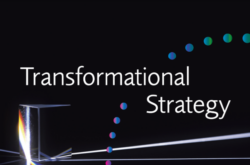Recently I was a participant in an online session where the facilitator sent participants to breakout groups with the sole instruction “talk about the topic”. Our group wasted the first half of our time going in circles trying to figure out what to talk about, and the rest of the time on several tangents. There was no useful outcome from our talk, and we were frustrated. When we got back to the main group, it was as if we were starting from scratch as every group had gone off on different tangents. On the other hand, whenever I do a reflection on a facilitated session online, the most loved part of the session is the small group!
Small group work is great for quiet or shy people, to give them time and space to share their thinking in a safe space. It also provides a safer way for divergent ideas to be expressed, as what is reported back to the whole group belongs to the group, not an individual. It also promotes building relationships within a team.
When a facilitator provides a structure for the small group work, the group can be more productive from the first minute. The minimum is to let the group know what kind of outcome is intended from their work, how much time they have, and how their work will be used in the next stage. Then it is critical to guide a process to use the results from the small group in the large group process that follows.
A Focused Conversation is a great flexible structure for small group work, and the Consensus Workshop Method thrives on bringing small group insights together elegantly in the large group.
In order to manage the small group work, the facilitator needs to have a sense of what is happening in the small groups, and be ready to unblock a small group’s work when they are stuck. The challenge for the facilitator is in not influencing the creative content of any small group’s discussion, while managing the process in more than one small group simultaneously.
In an in-person event, this may mean walking around the room, stopping at each small group for a moment just to listen, only intervening if asked or if there is an obvious problem. Then suggesting a process step, rather than a content answer, is appropriate. In an online session, the host can drop into breakout groups and listen for a few seconds, only speaking if asked. Or the group can work on a shared online whiteboard, so that the facilitator can see the ideas emerging in real time and anticipate challenges.
When the large group process incorporates the work of the small group to create a consensus of the whole group, participants feel respected and usefully engaged. Reports can be interminable if given verbally and linearly. But there are great tools to make reporting and incorporating small group contributions manageable. Please see the accompanying article for some tools.
We teach the Focused Conversation Method and the Consensus Workshop Method in our Group Facilitation Methods course in a very participatory, hands-on way. Find out more and register here.






